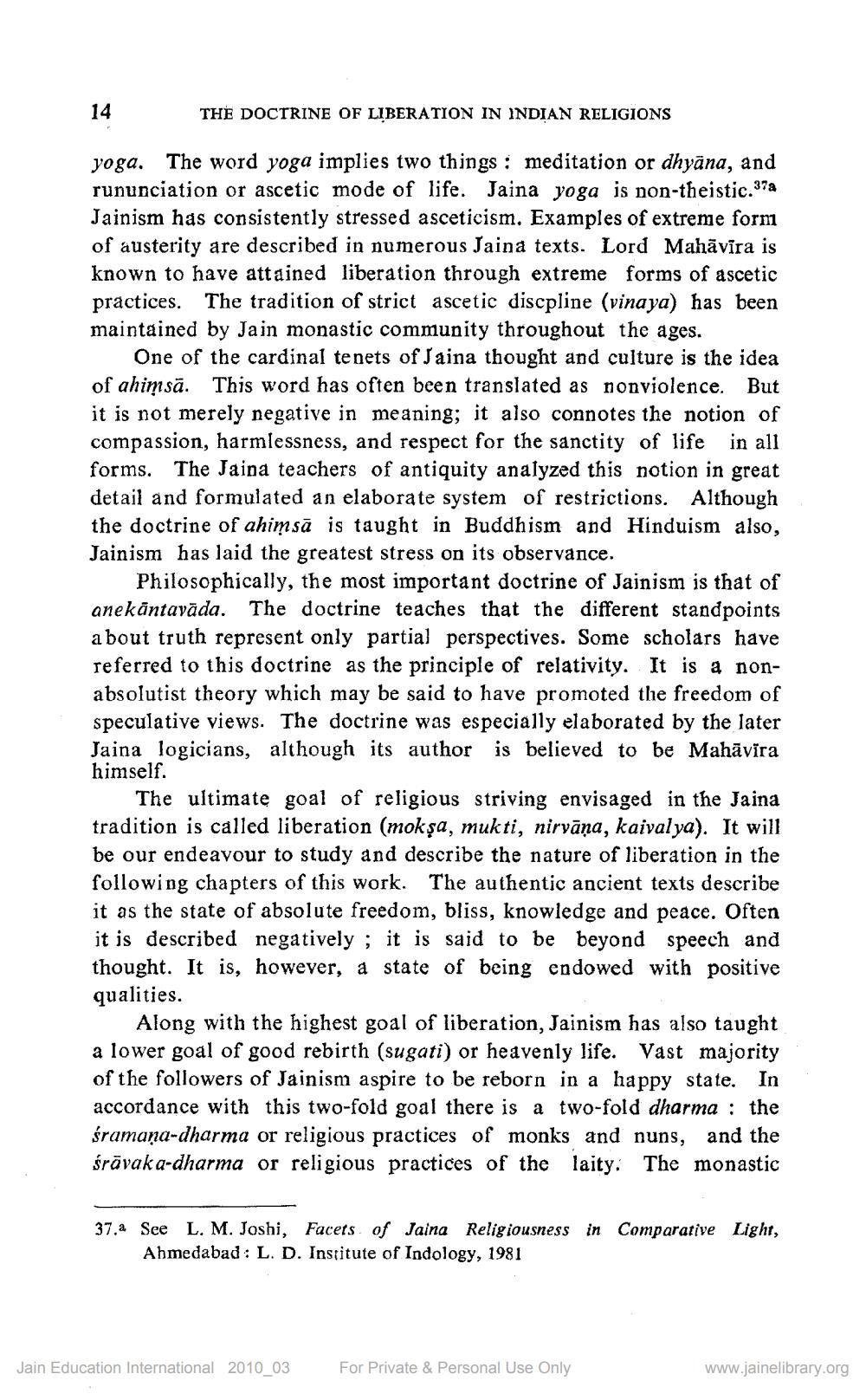________________
14
THE DOCTRINE OF LIBERATION IN INDIAN RELIGIONS
yoga. The word yoga implies two things: meditation or dhyāna, and rununciation or ascetic mode of life. Jaina yoga is non-theistic.37a Jainism has consistently stressed asceticism. Examples of extreme form of austerity are described in numerous Jaina texts. Lord Mahāvīra is known to have attained liberation through extreme forms of ascetic practices. The tradition of strict ascetic discpline (vinaya) has been maintained by Jain monastic community throughout the ages.
One of the cardinal tenets of Jaina thought and culture is the idea of ahimsa. This word has often been translated as nonviolence. But it is not merely negative in meaning; it also connotes the notion of compassion, harmlessness, and respect for the sanctity of life in all forms. The Jaina teachers of antiquity analyzed this notion in great detail and formulated an elaborate system of restrictions. Although the doctrine of ahimsa is taught in Buddhism and Hinduism also, Jainism has laid the greatest stress on its observance.
Philosophically, the most important doctrine of Jainism is that of anekāntavāda. The doctrine teaches that the different standpoints about truth represent only partial perspectives. Some scholars have referred to this doctrine as the principle of relativity. It is a nonabsolutist theory which may be said to have promoted the freedom of speculative views. The doctrine was especially elaborated by the later Jaina logicians, although its author is believed to be Mahāvīra himself.
The ultimate goal of religious striving envisaged in the Jaina tradition is called liberation (mokşa, mukti, nirvāṇa, kaivalya). It will be our endeavour to study and describe the nature of liberation in the following chapters of this work. The authentic ancient texts describe it as the state of absolute freedom, bliss, knowledge and peace. Often it is described negatively; it is said to be beyond speech and thought. It is, however, a state of being endowed with positive qualities.
Along with the highest goal of liberation, Jainism has also taught a lower goal of good rebirth (sugati) or heavenly life. Vast majority of the followers of Jainism aspire to be reborn in a happy state. In accordance with this two-fold goal there is a two-fold dharma: the śramaṇa-dharma or religious practices of monks and nuns, and the śrāvaka-dharma or religious practices of the laity. The monastic
37.a See L. M. Joshi, Facets of Jaina Religiousness in Comparative Light, Ahmedabad: L. D. Institute of Indology, 1981
Jain Education International 2010_03
For Private & Personal Use Only
www.jainelibrary.org




